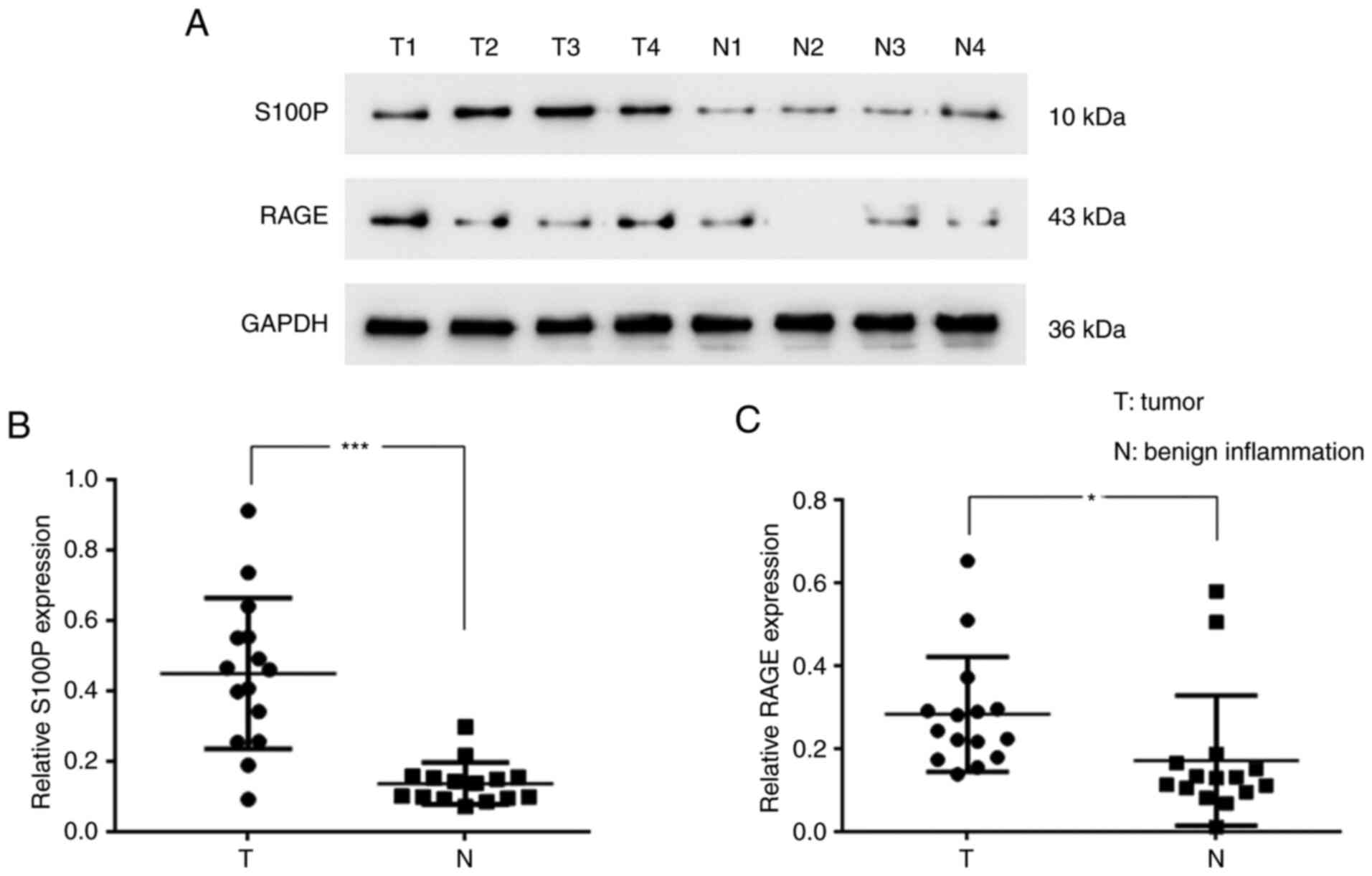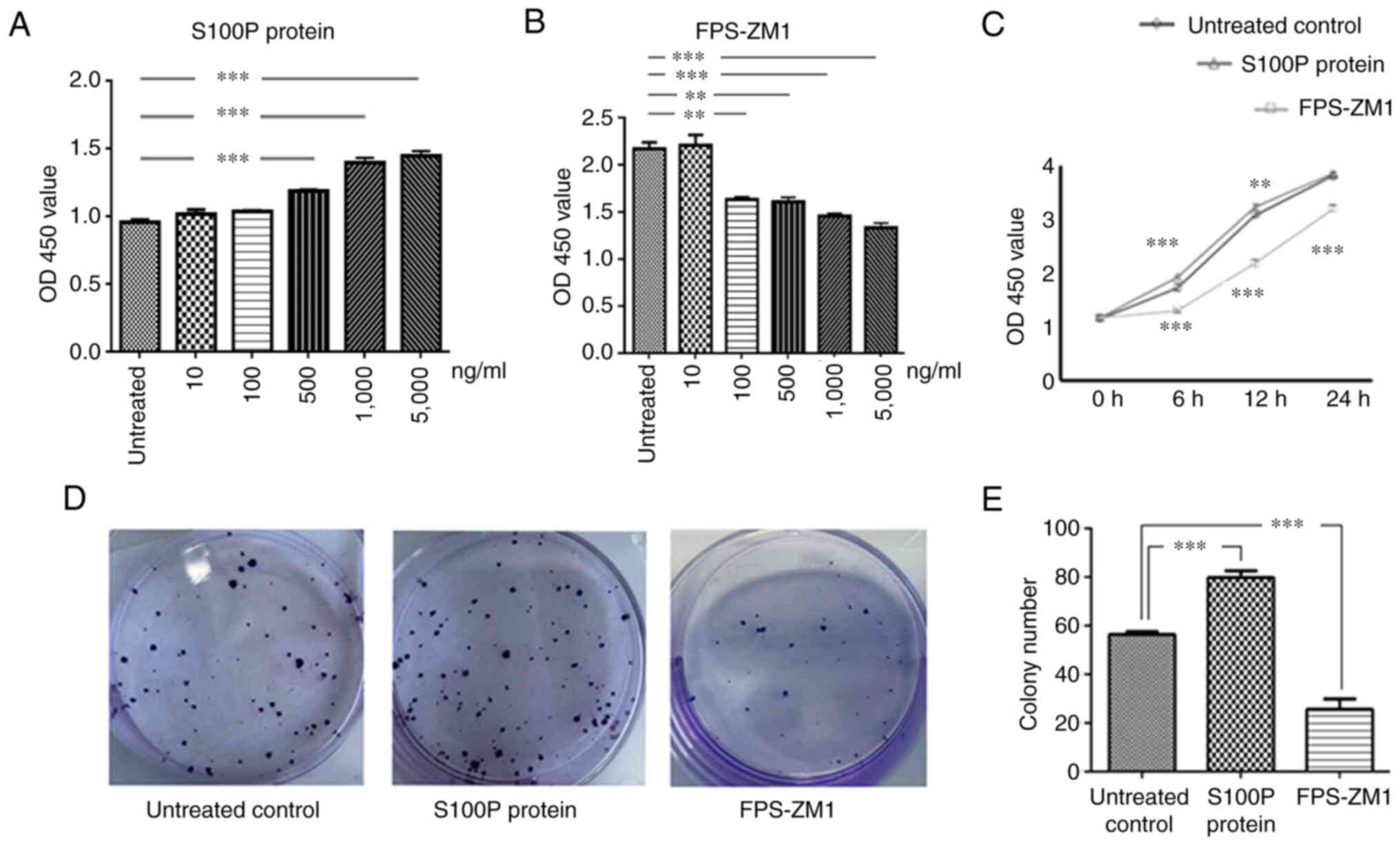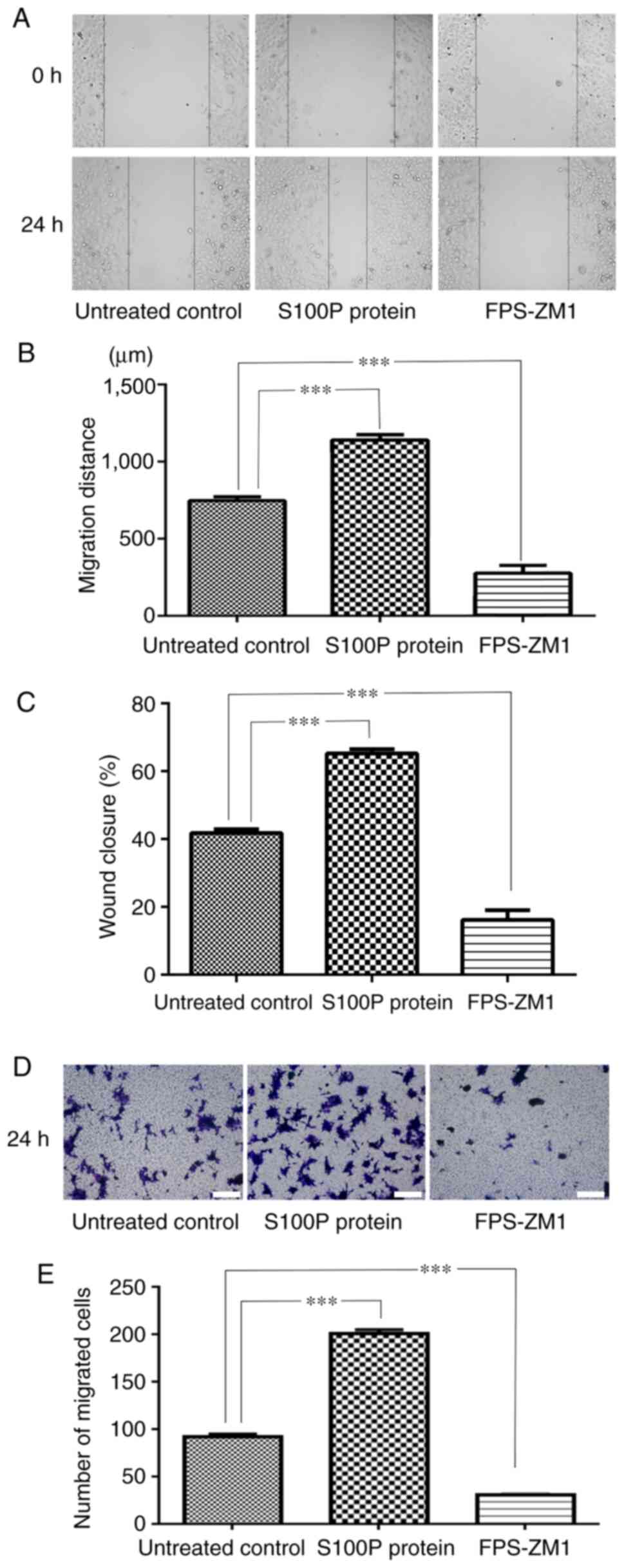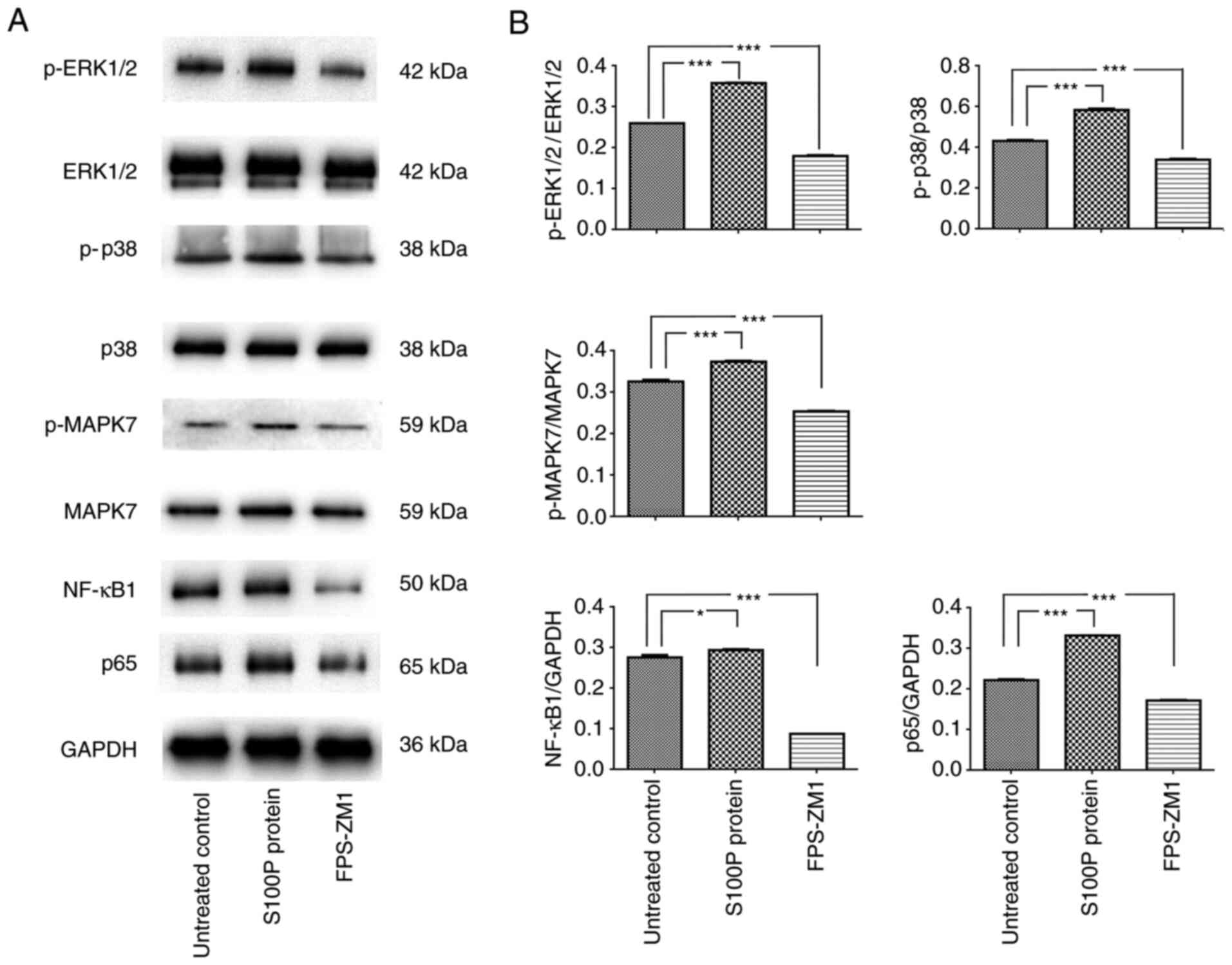|
1
|
Tian Y, Tang L, Yi P, Pan Q, Han Y, Shi Y,
Rao S, Tan S, Xia L, Lin J, et al: miRNAs in radiotherapy
resistance of nasopharyngeal carcinoma. J Cancer. 11:3976–3985.
2020.PubMed/NCBI View Article : Google Scholar
|
|
2
|
Chen YP, Chan ATC, Le QT, Blanchard P, Sun
Y and Ma J: Nasopharyngeal carcinoma. Lancet. 394:64–80.
2019.PubMed/NCBI View Article : Google Scholar
|
|
3
|
Lee AW, Ng WT, Chan YH, Sze H, Chan C and
Lam TH: The battle against nasopharyngeal cancer. Radiother Oncol.
104:272–278. 2012.PubMed/NCBI View Article : Google Scholar
|
|
4
|
Cao SM, Simons MJ and Qian CN: The
prevalence and prevention of nasopharyngeal carcinoma in China.
Chin J Cancer. 30:114–119. 2011.PubMed/NCBI View Article : Google Scholar
|
|
5
|
Tu C, Zeng Z, Qi P, Li X, Yu Z, Guo C,
Xiong F, Xiang B, Zhou M, Gong Z, et al: Genome-wide analysis of 18
epstein-barr viruses isolated from primary nasopharyngeal carcinoma
biopsy specimens. J Virol. 91:e00301–e00317. 2017.PubMed/NCBI View Article : Google Scholar
|
|
6
|
Lam WKJ and Chan JYK: Recent advances in
the management of nasopharyngeal carcinoma. F1000Res.
7(F1000)2018.PubMed/NCBI View Article : Google Scholar
|
|
7
|
Nakayama H, Ohuchida K, Yonenaga A, Sagara
A, Ando Y, Kibe S, Takesue S, Abe T, Endo S, Koikawa K, et al:
S100P regulates the collective invasion of pancreatic cancer cells
into the lymphatic endothelial monolayer. Int J Oncol. 55:211–222.
2019.PubMed/NCBI View Article : Google Scholar
|
|
8
|
Sasahira T, Kirita T, Bhawal UK, Yamamoto
K, Ohmori H, Fujii K and Kuniyasu H: Receptor for advanced
glycation end products (RAGE) is important in the prediction of
recurrence in human oral squamous cell carcinoma. Histopathology.
51:166–172. 2007.PubMed/NCBI View Article : Google Scholar
|
|
9
|
Choi J, Lee MK, Oh KH, Kim YS, Choi HY,
Baek SK, Jung KY, Woo JS, Lee SH and Kwon SY: Interaction effect
between the receptor for advanced glycation end products (RAGE) and
high-mobility group box-1 (HMGB-1) for the migration of a squamous
cell carcinoma cell line. Tumori. 97:196–202. 2011.PubMed/NCBI View
Article : Google Scholar
|
|
10
|
Leclerc E, Fritz G, Vetter SW and Heizmann
CW: Binding of S100 proteins to RAGE: An update. Biochim Biophys
Acta. 1793:993–1007. 2009.PubMed/NCBI View Article : Google Scholar
|
|
11
|
Hofmann MA, Drury S, Fu C, Qu W, Taguchi
A, Lu Y, Avila C, Kambham N, Bierhaus A, Nawroth P, et al: RAGE
mediates a novel proinflammatory axis: A central cell surface
receptor for S100/calgranulin polypeptides. Cell. 97:889–901.
1999.PubMed/NCBI View Article : Google Scholar
|
|
12
|
Becker T, Gerke V, Kube E and Weber K:
S100P, a novel Ca(2+)-binding protein from human placenta. cDNA
cloning, recombinant protein expression and Ca2+ binding
properties. Eur J Biochem. 207:541–547. 1992.PubMed/NCBI View Article : Google Scholar
|
|
13
|
Prica F, Radon T, Cheng Y and
Crnogorac-Jurcevic T: The life and works of S100P-from conception
to cancer. Am J Cancer Res. 6:562–576. 2016.PubMed/NCBI
|
|
14
|
Arumugam T, Simeone DM, Van Golen K and
Logsdon CD: S100P promotes pancreatic cancer growth, survival, and
invasion. Clin Cancer Res. 11:5356–5364. 2005.PubMed/NCBI View Article : Google Scholar
|
|
15
|
Liu Y, Wang C, Shan X, Wu J, Liu H, Liu H,
Zhang J, Xu W, Sha Z, He J and Fan J: S100P is associated with
proliferation migration in nasopharyngeal carcinoma. Oncol Lett.
14:525–532. 2017.PubMed/NCBI View Article : Google Scholar
|
|
16
|
Cheung ST, Huang DP, Hui AB, Lo KW, Ko CW,
Tsang YS, Wong N, Whitney BM and Lee JC: Nasopharyngeal carcinoma
cell line (C666-1) consistently harbouring Epstein-Barr virus. Int
J Cancer. 83:121–126. 1999.PubMed/NCBI View Article : Google Scholar
|
|
17
|
Hudson BI and Lippman ME: Targeting RAGE
signaling in inflammatory disease. Annu Rev Med. 69:349–364.
2018.PubMed/NCBI View Article : Google Scholar
|
|
18
|
Mahmood T and Yang PC: Western blot:
Technique, theory, and trouble shooting. N Am J Med Sci. 4:429–434.
2012.PubMed/NCBI View Article : Google Scholar
|
|
19
|
Franken NA, Rodermond HM, Stap J, Haveman
J and van Bree C: Clonogenic assay of cells in vitro. Nat Protoc.
1:2315–2319. 2006.PubMed/NCBI View Article : Google Scholar
|
|
20
|
Sun Y, Liu WZ, Liu T, Feng X, Yang N and
Zhou HF: Signaling pathway of MAPK/ERK in cell proliferation,
differentiation, migration, senescence and apoptosis. J Recept
Signal Transduct Res. 35:600–604. 2015.PubMed/NCBI View Article : Google Scholar
|
|
21
|
Pramanik KC, Makena MR, Bhowmick K and
Pandey MK: Advancement of NF-κB signaling pathway: A novel target
in pancreatic cancer. Int J Mol Sci. 19(3890)2018.PubMed/NCBI View Article : Google Scholar
|
|
22
|
Huang T, Yin L, Wu J, Gu JJ, Wu JZ, Chen
D, Yu HL, Ding K, Zhang N, Du MY, et al: MicroRNA-19b-3p regulates
nasopharyngeal carcinoma radiosensitivity by targeting
TNFAIP3/NF-κB axis. J Exp Clin Cancer Res. 35(188)2016.PubMed/NCBI View Article : Google Scholar
|
|
23
|
Chan AT: Current treatment of
nasopharyngeal carcinoma. Eur J Cancer. 47 (Suppl 3):S302–S303.
2011.PubMed/NCBI View Article : Google Scholar
|
|
24
|
Yang H, Zhang G, Che X and Yu S: Slug
inhibition increases radiosensitivity of nasopharyngeal carcinoma
cell line C666-1. Exp Ther Med. 15:3477–3482. 2018.PubMed/NCBI View Article : Google Scholar
|
|
25
|
Barker HE, Paget JT, Khan AA and
Harrington KJ: The tumour microenvironment after radiotherapy:
Mechanisms of resistance and recurrence. Nat Rev Cancer.
15:409–425. 2015.PubMed/NCBI View
Article : Google Scholar
|
|
26
|
Arumugam T, Simeone DM, Schmidt AM and
Logsdon CD: S100P stimulates cell proliferation and survival via
receptor for activated glycation end products (RAGE). J Biol Chem.
279:5059–5065. 2004.PubMed/NCBI View Article : Google Scholar
|
|
27
|
Parkkila S, Pan PW, Ward A, Gibadulinova
A, Oveckova I, Pastorekova S, Pastorek J, Martinez AR, Helin HO and
Isola J: The calcium-binding protein S100P in normal and malignant
human tissues. BMC Clin Pathol. 8(2)2008.PubMed/NCBI View Article : Google Scholar
|
|
28
|
Stecca B and Rovida E: Impact of ERK5 on
the hallmarks of cancer. Int J Mol Sci. 20(1426)2019.PubMed/NCBI View Article : Google Scholar
|
|
29
|
Sen R and Baltimore D: Multiple nuclear
factors interact with the immunoglobulin enhancer sequences. Cell.
46:705–716. 1986.PubMed/NCBI View Article : Google Scholar
|
|
30
|
Jiang L, Lai YK, Zhang J, Wang H, Lin MC,
He ML and Kung HF: Targeting S100P inhibits colon cancer growth and
metastasis by Lentivirus-mediated RNA interference and proteomic
analysis. Mol Med. 17:709–716. 2011.PubMed/NCBI View Article : Google Scholar
|
|
31
|
Ning X, Sun S, Hong L, Liang J, Liu L, Han
S, Liu Z, Shi Y, Li Y, Gong W, et al: Calcyclin-binding protein
inhibits proliferation, tumorigenicity, and invasion of gastric
cancer. Mol Cancer Res. 5:1254–1262. 2007.PubMed/NCBI View Article : Google Scholar
|
|
32
|
Beissel B, Silva ID, Pesquero JB, Russo J,
Schor N and Bellini MH: S-phase reduction in T47D human breast
cancer epithelial cells induced by an S100P antisense-retroviral
construct. Oncol Rep. 17:611–615. 2007.PubMed/NCBI
|
|
33
|
Zhang YW, Zheng Y, Wang JZ, Lu XX, Wang Z,
Chen LB, Guan XX and Tong JD: Integrated analysis of DNA
methylation and mRNA expression profiling reveals candidate genes
associated with cisplatin resistance in non-small cell lung cancer.
Epigenetics. 9:896–909. 2014.PubMed/NCBI View Article : Google Scholar
|
|
34
|
Tang H, Liu YJ, Liu M and Li X:
Establishment and gene analysis of an oxaliplatin-resistant colon
cancer cell line THC8307/L-OHP. Anticancer Drugs. 18:633–639.
2007.PubMed/NCBI View Article : Google Scholar
|


















